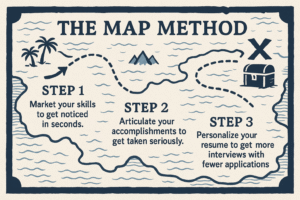Bonus material: Free MAP Method Resume Toolkit
In just a few weeks, I went from getting ghosted by job applications to landing a senior biostatistics role with a $40K raise and full remote flexibility.

Today I’m going to show you exactly how I did it, step by step.
If you want more interviews, a higher-paying role, and job offers that actually excite you – then this resume strategy is for you.
Grab my MAP Method Resume Toolkit below to see resume examples from the strategy.
Download My MAP Method Resume Toolkit
Then keep reading to learn how to apply the MAP Method step-by-step.
Update: The MAP Method Has Been Expanded
Get the full, advanced version of the MAP Method—inside a step-by-step course designed to help biostatistics professionals consistently land interviews (and offers) with a resume that does the hard work for you.
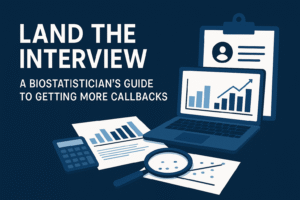
The MAP Method: Technical Resume Writing That Actually Gets Results
Most people focus on formatting, proofreading, and throwing their resume into every job board. That’s a start – but nothing beats a resume that opens doors to interviews quickly, boosts your salary potential, and sets you apart from every other candidate.
Here’s what that looks like:
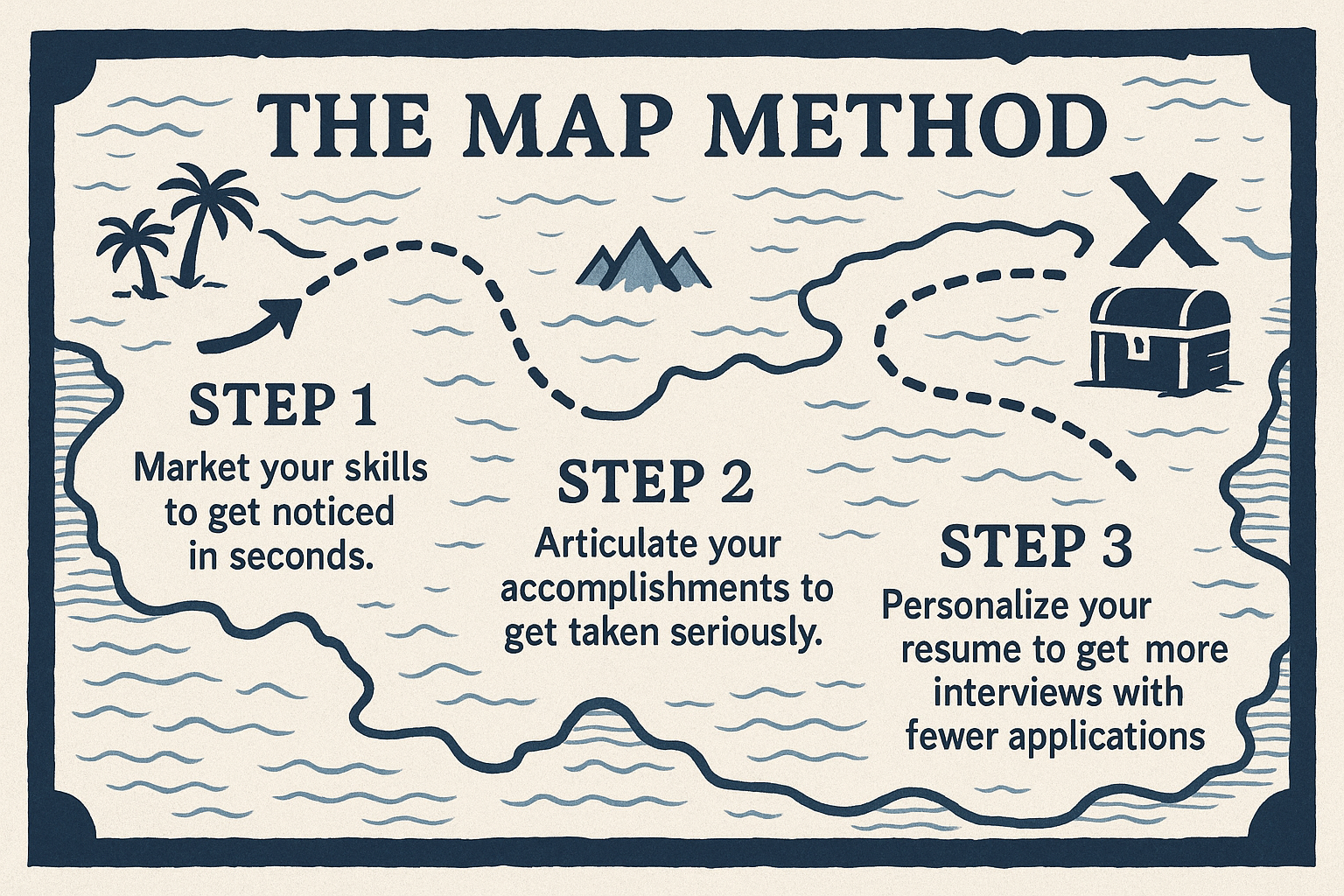
Ask any recruiter or hiring manager how to write a resume to get interviews, and they’ll tell you this:
- Choose the perfect resume format
- Fill in your skills, experience and education
- Keep applying for jobs until you hear back
That’s an old strategy from the 2000s.
The competition for biostatistics jobs is so fierce now, you could apply for months and never get a response. And even if you land interviews, you need more than just a seat at the table – you need a resume that makes hiring managers say, “This is the candidate we can’t afford to lose.”
I Used The MAP Method to Land a $40K Raise, a 100% Remote Role, and 3 Interviews in Just 3 Weeks
Last year, I overhauled my resume using what’s now called “The MAP Method”.
Within just 3 weeks, I landed 3 interviews, secured a 100% remote biostatistics role, and negotiated a $40,000 increase in total compensation – without spamming applications or rewriting my entire resume from scratch.
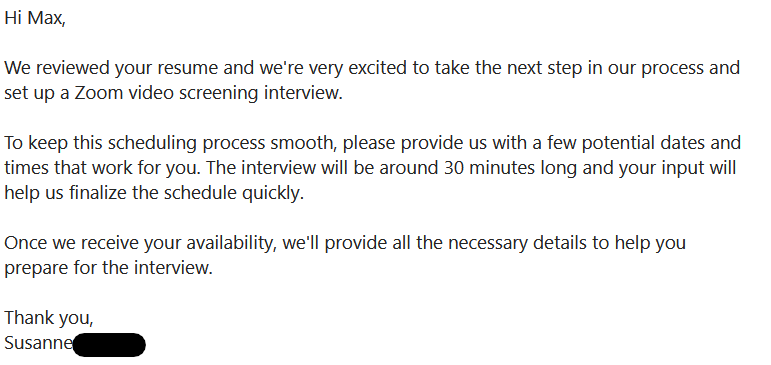
But I didn’t stop there.
Over the next year, I began sharing the strategy – first casually on Reddit, then by working directly with people trying to break into or move up in biostatistics and data careers.

And I saw the same pattern over and over: brilliant candidates with strong skills, but resumes that were getting ignored.
That’s when something clicked: you don’t need to apply to hundreds of jobs.
What’s important is positioning yourself so well that the jobs you do apply for want to bring you in for an interview.
So I refined the MAP Method further – tailoring messaging to exactly what hiring managers in biostatistics are scanning for. Instead of sounding “well-rounded,” we focused on specific skills, measurable impact, and clear alignment.
The result? Fewer applications, more responses, and better offers.
I personally went from 1 response in 50…
…to 1 in 15 – sometimes even getting outreach without applying at all.
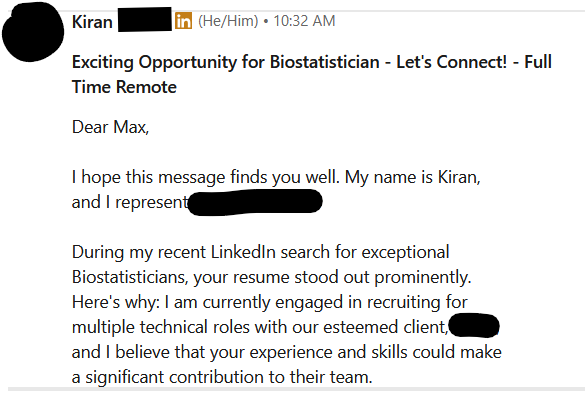
These results didn’t come from rewriting my resume 10 times or blasting out hundreds of applications.
So, what did I do instead?
The 3-Steps To Using “The MAP Method” To Turn Your Applications Into Interviews
There are three steps to execute The MAP Method successfully.
Step 1: Market your skills to get noticed in seconds.
Step 2: Articulate your accomplishments to get taken seriously.
Step 3: Personalize your resume to get more interviews with fewer applications.
Below is a breakdown of how every part of the strategy works.
But first let me tell you what this has to do with a map.
Yes, it’s an acronym for the three stages – but it’s also exactly what most resumes are missing: a clear path.
A great resume shouldn’t just list your experience. It should guide hiring managers straight to one conclusion: this is the candidate we need to bring in.
Most biostatisticians hand over a wall of text and hope the recruiter “figures it out.” With the MAP Method, your resume works like a treasure map – leading hiring managers straight to the gold: the skills, accomplishments, and fit they’re looking for.
Bonus: I put together a toolkit of the highest performing resume skills, accomplishments and personalized sections that I’m currently using to land interviews and job offers with The MAP Method. You can access it for free inside this MAP Method Resume Toolkit.
Step 1: Market Your Skills To Get Noticed in Seconds
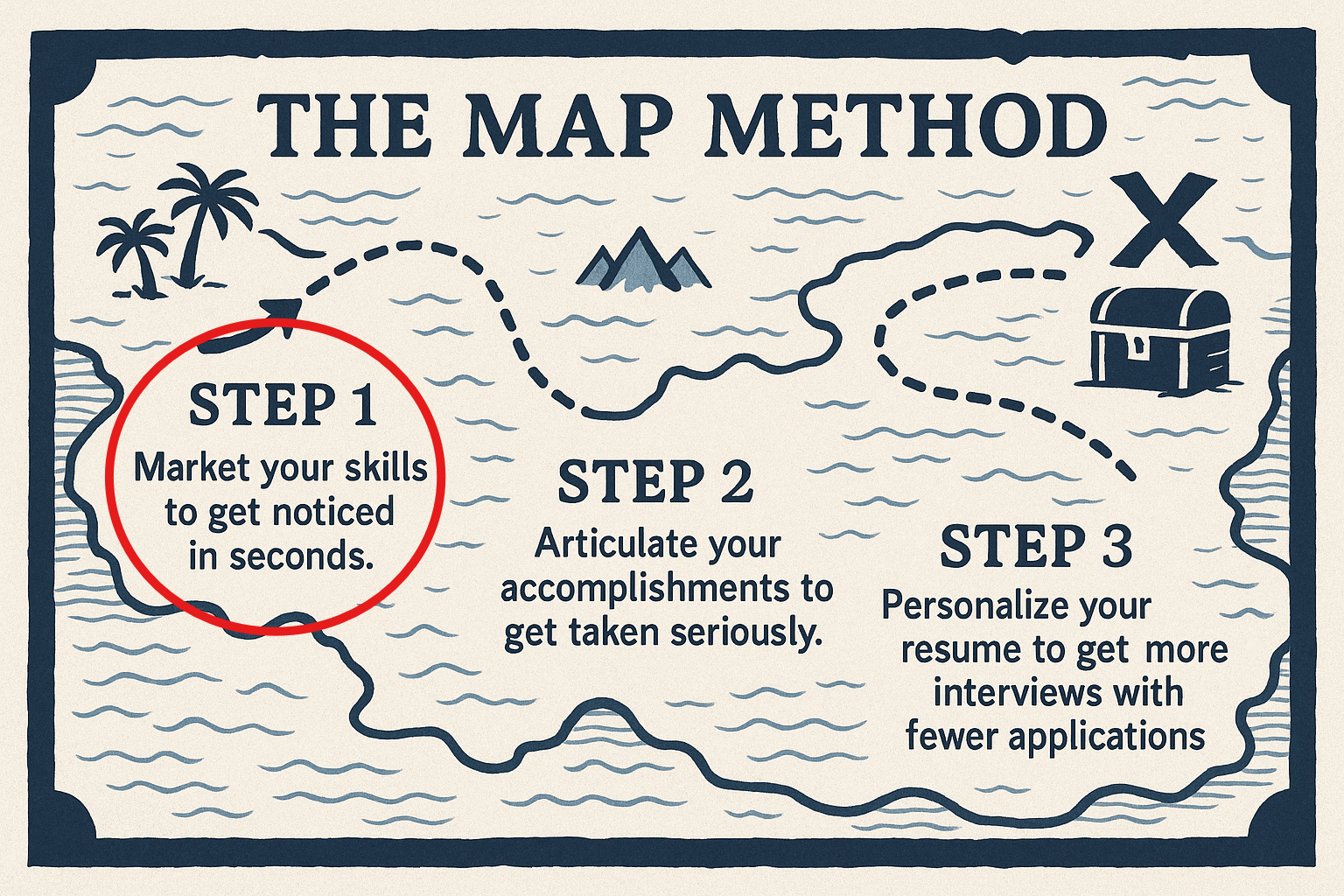
Most biostatisticians think of a resume as a laundry list of technical skills. They hand over a wall of text and hope the recruiter “figures it out.”
With the MAP Method, you’re going to approach it differently.
Here’s the deal:
Your resume has a few jobs.
It needs to catch the attention of a recruiter or hiring manager. When your resume finally gets in front of a human, it must immediately convey your expertise, your credibility, and your value to the team.
But that’s not where it starts.
Before any human sees your resume, it has to pass through the Applicant Tracking System (ATS) – software that scans and filters resumes before they even make it to a real person.
Most resumes never make it past this stage. They’re filtered out, misread, or ranked too low to get noticed. And that’s a shame, because many of these applicants were perfectly qualified – but their resumes didn’t speak the ATS’s language.
I don’t want that to happen to you.
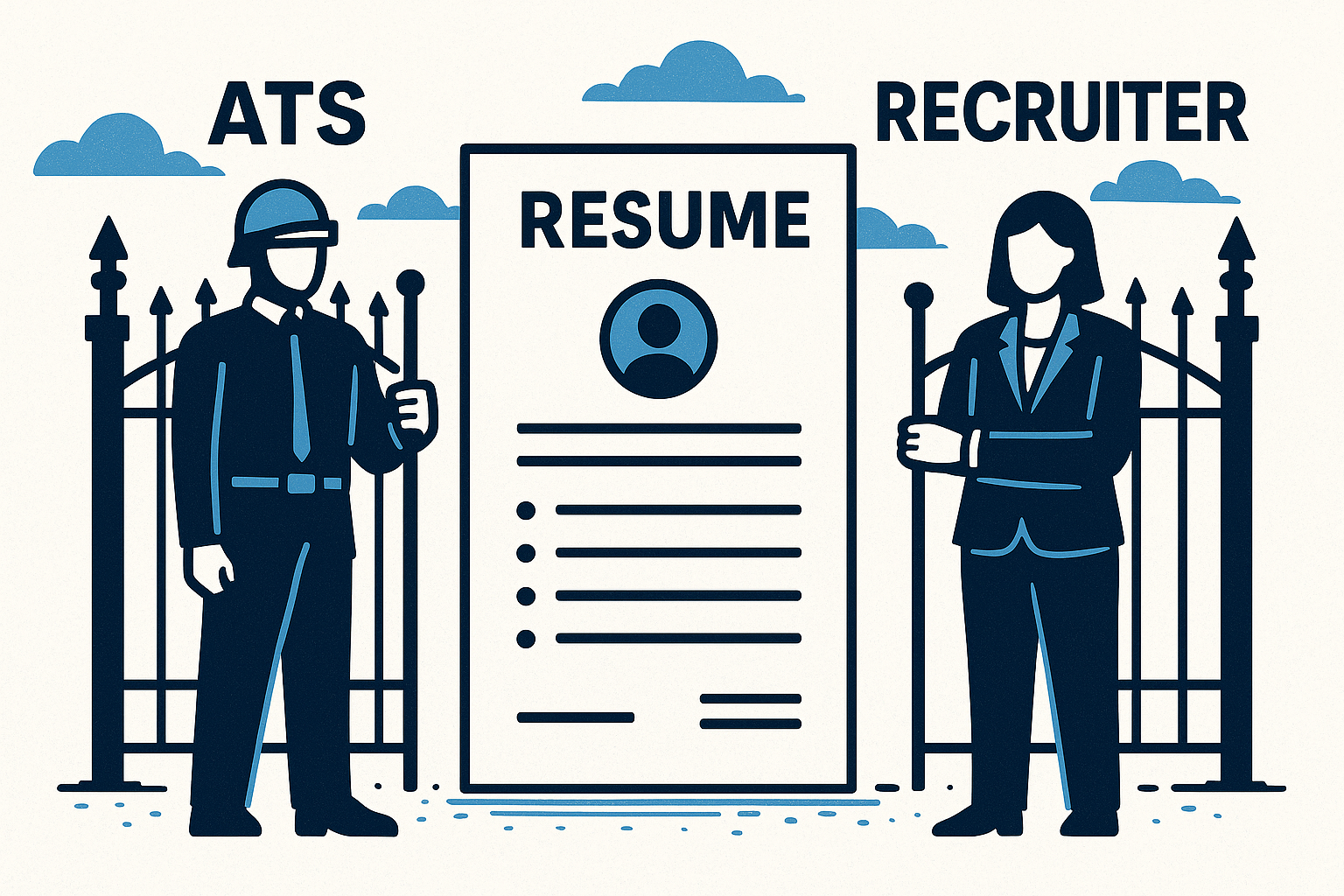
Here’s how to fix it:
First, Get Clear on the Rules of the Game
The ATS works by scanning your resume for keywords and phrases that match the job description. If your resume doesn’t closely align with the requirements of the role – or if the formatting is off – it’ll get buried.
Even if you’re the perfect candidate.
This is why the first step of the MAP Method focuses on marketing your skills effectively – so both the system and the person reading it know exactly why you’re a strong fit.
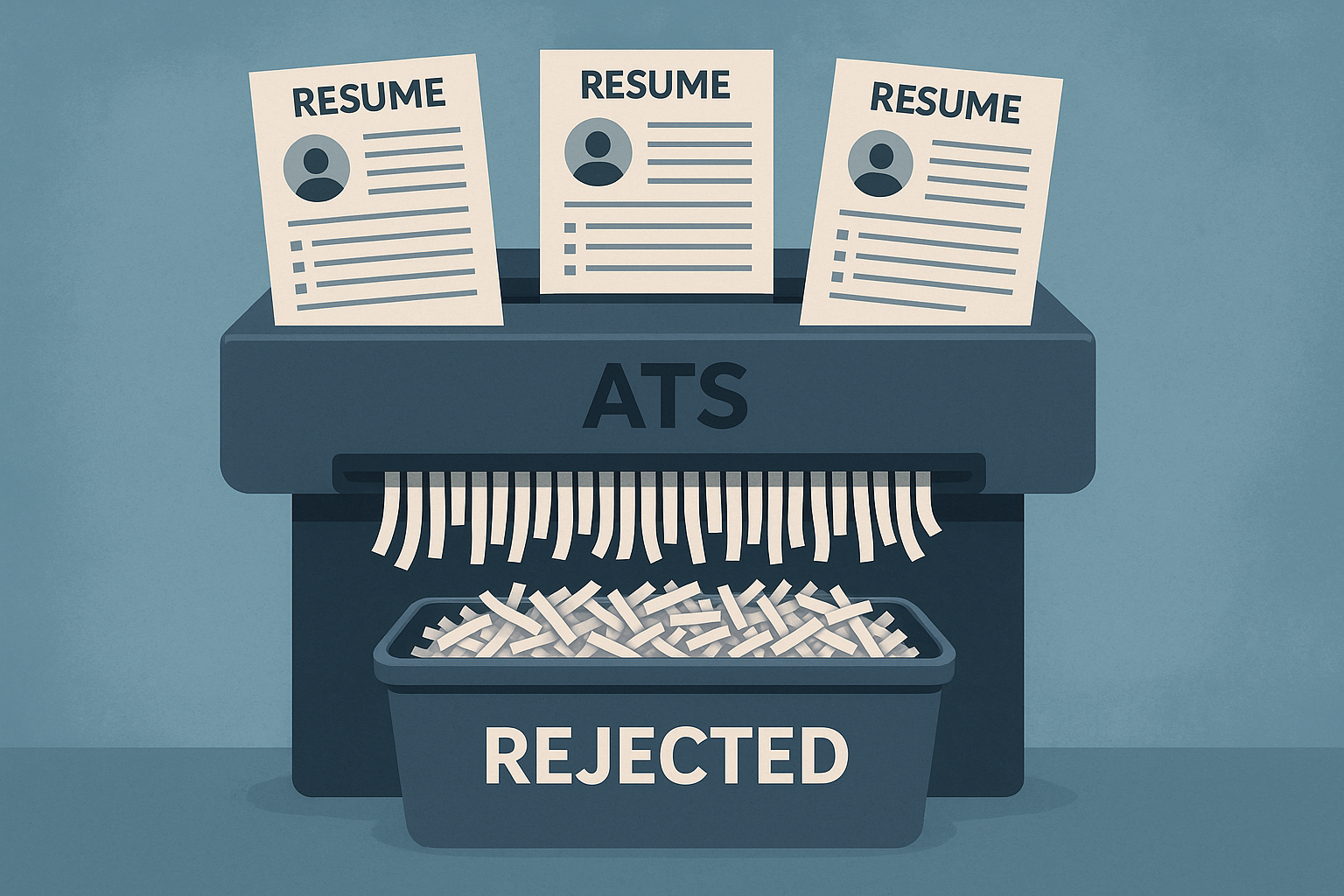
How to Build Your High-Impact Skills Section
Here’s the process:
Reverse Engineer Real Job Descriptions
Find 2–3 listings for roles you’d genuinely love to land – whether at a large pharma company, a CRO, or a biotech startup. Carefully scan the “Qualifications” and “Requirements” sections. Look for skills, tools, methods, and domain-specific terms that repeat. These are the keywords you need.
For example:
If every listing mentions “SAS programming,” “R,” and “CDISC,” those are non-negotiables for your skills section.

Identify Your Core “Standout Seven” Skills
From your analysis, select 7 core skills that match both your expertise and the most in-demand qualifications. These should include:
-
Statistical software (e.g., SAS, R, Python)
-
Key methodologies (e.g., regression modeling, survival analysis)
-
Industry-specific frameworks (e.g., CDISC, ADaM)
-
High-value capabilities (e.g., data visualization, cross-functional collaboration)
For example, if your PhD is in analysing clinical data for real-world evidence generation in oncology – these skills will set you apart in certain jobs – like the one below.
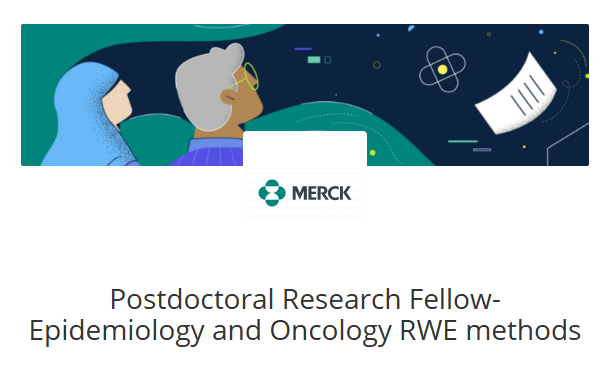
Format for Clarity and Quick Scanning
Your skills section isn’t the place for long explanations. Keep it concise, well-formatted, and easy to parse. Use a clean layout with vertical bars | or bullet points to separate each skill, like so:
Example:
SAS | R | Python | Clinical Trial Design | CDISC | ADaM | Regulatory Reporting | Survival Analysis | Data Visualization
This format makes it easy for both ATS algorithms and busy recruiters to spot your qualifications at a glance.
Note: You can add too many skills to this section.

Align the Language
It’s critical that your skills section mirrors the language used in the job postings – but without copying them verbatim. This ensures the ATS flags your resume as relevant, while human readers see a clear match.
For instance, if a job description uses “statistical programming,” don’t write “data analysis scripts” or “code writing.” Match the phrasing as closely as possible: “Statistical programming in SAS and R.”
See the example of job-specific language below:

Bottom Line
Your skills section is not just a list – it’s a signal. It shows employers (and their algorithms) that you have the capabilities they’re looking for.
With the MAP Method, we approach it systematically:
-
Identify the right skills.
-
Format them clearly and concisely.
-
Align them with the job’s language.
Do this, and your resume will pass the ATS filter and make an immediate impact on human readers.
Want to see what a successful skills section looks like? I put together a toolkit of skills section examples that I’m currently using to land interviews and job offers with The MAP Method. You can access it for free inside this MAP Method Resume Toolkit.
In the next step, we’ll focus on how to articulate your accomplishments – so that your resume not only lists the right skills, but also proves you know how to use them.
Step 2: Articulate Your Accomplishments To Get Taken Seriously
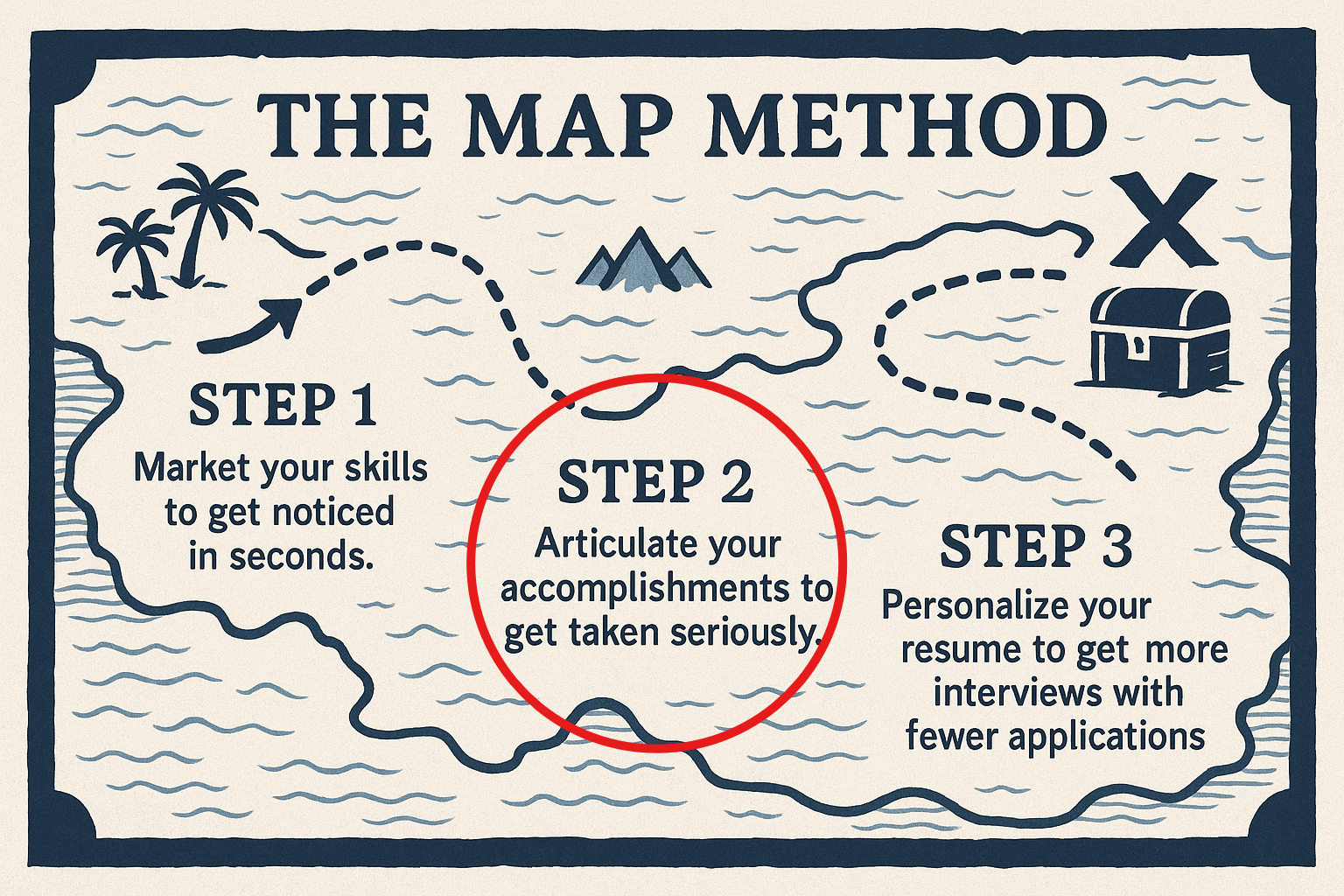
Let’s cut to the chase:
Most biostatistics resumes read like job descriptions, not compelling narratives. They’re full of generic phrases like “performed analysis,” “worked on data,” or “developed models” – and frankly, those don’t stand out.
In a field as competitive as biostatistics, your resume must do more than describe your duties. It needs to tell a story of your impact – with clear, quantified results that instantly grab attention.
Here’s an example of the wrong way to do this:

Why This Matters
Think about it:
Every applicant lists the similar programming languages (SAS, R, Python), the same methodologies (regression, survival analysis), and similar experiences (clinical trials, CDISC).
While this is necessary for the skills section to be considered for the role, if your resume sounds just like everyone else’s, why would a recruiter choose you?
Hiring managers are skimming hundreds of resumes, looking for candidates who don’t just do the job, but do it exceptionally well. If your bullets aren’t making them pause and think, “Wow, this candidate really made a difference, we should interview them!”, you’re missing an opportunity.
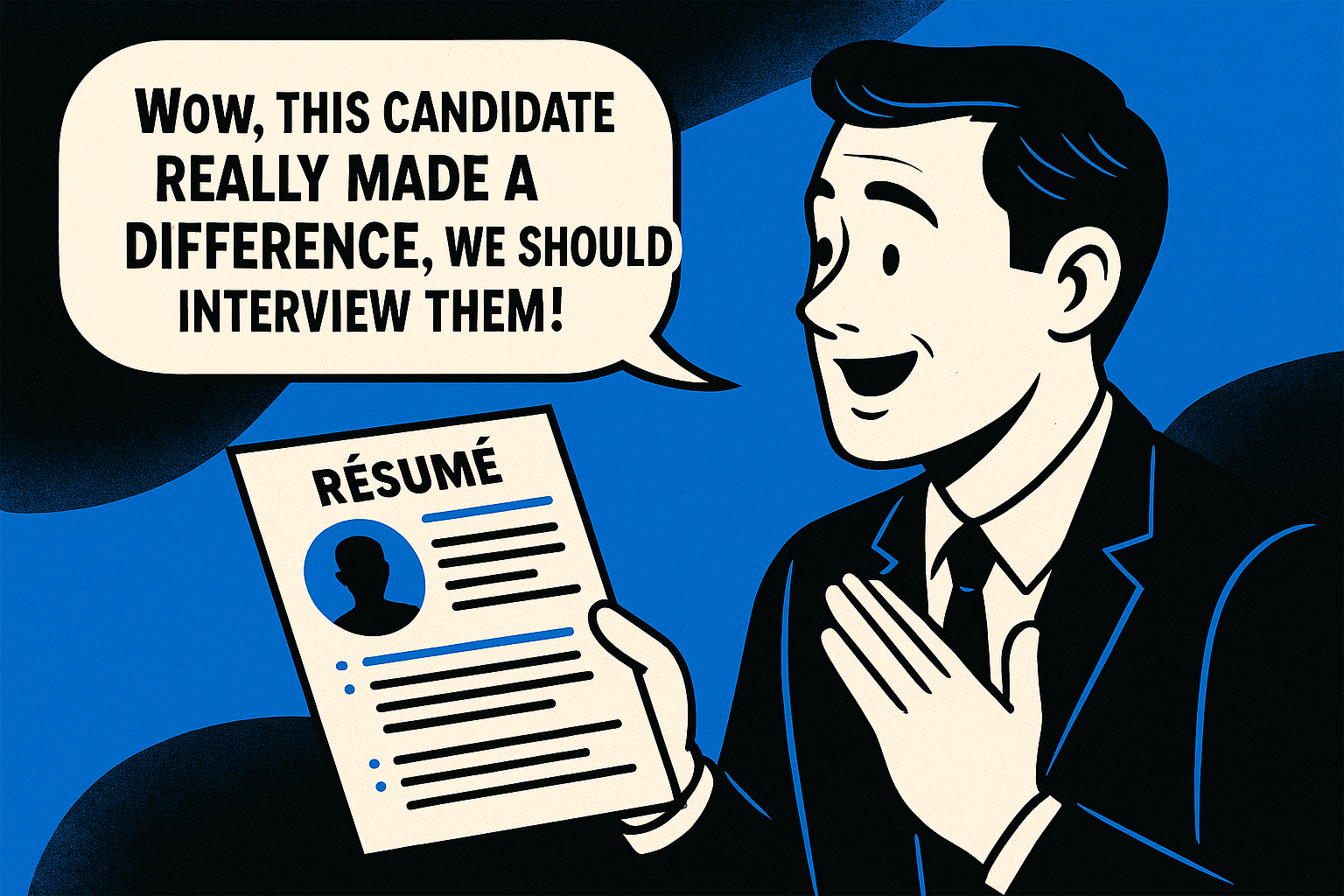
How to Transform Your Resume
Here’s where the MAP Method shifts gears. We move from simply listing tasks to showing measurable achievements.
Use the Formula:
Action Verb + What You Did + Result (with Numbers)
This simple structure transforms vague descriptions into compelling, results-oriented statements.
For Example:
-
Before: “Performed data analysis using R and SAS.”
-
After: “Analyzed clinical trial data using R and SAS, improving model predictive accuracy by 20%, leading to better patient outcome forecasts.”
Much better! The quantitative result makes it stand out.
You might ask, “What if I don’t have any clear, quantifiable outcomes?”. In that case, add a quantitative action instead.
If you’re still in academia or an early-career stage, you can still highlight measurable contributions. Focus on actions that improved efficiency, solved problems, or made processes more reliable.
For Example:
-
Before: “Worked with a senior researcher on the analysis of progression time to Alzheimer’s Disease.”
-
After: “Collaborated with a senior researcher on the analysis of progression time to Alzheimer’s Disease by automating statistical processes to reduce the estimated analysis time from 4 weeks to 2 weeks.”
A capstone project or
If you lack formal job experience, use class projects, internships, or personal projects:
- Before: “Built predictive model for coursework project.”
- After: “Designed predictive model for university project, achieving 85% accuracy in forecasting clinical outcomes using R and Python.”
A university project gives you plenty of measurable contributions to mention:
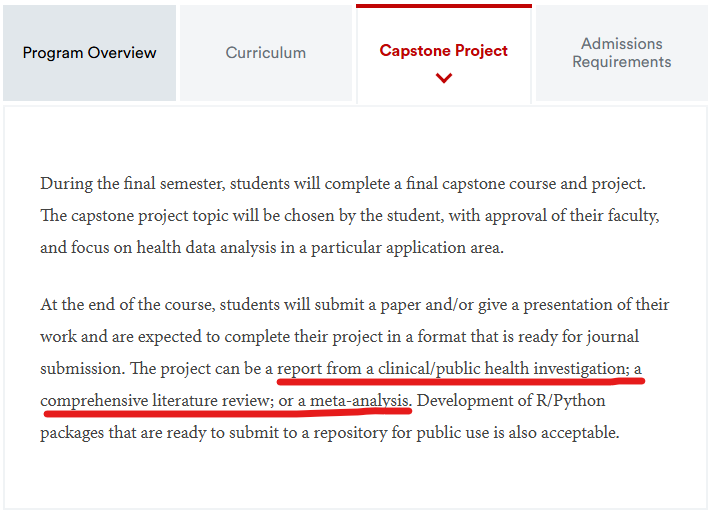
Why This Approach Works
- Numbers and Impact Matter: Hiring managers are trained to spot impact-driven language. Quantitative results show you didn’t just do the job – you made a difference.
- It’s Memorable: Vague descriptions blur together; specific numbers stand out.
- It Sets You Apart: Many resumes list tasks; few tell a story of measurable success. This is how you break through the noise.
Bottom Line
Your resume isn’t just a summary of what you did – it’s a marketing document. Its job is to show hiring managers that you’re not just qualified, but uniquely valuable.
By transforming your bullet points into results-oriented, quantifiable statements you’ll recruiters and hiring managers want to talk to you.
Want to see what a successful quantified bullet points looks like? I put together a toolkit of quantified bullet point templates that I’m currently using to land interviews and job offers with The MAP Method. You can access it for free inside this MAP Method Resume Toolkit.
In the next step, we’ll focus on personalizing your resume – so your resume tells a cohesive narrative that aligns with the roles you’re targeting.
Step 3: Personalize Your Resume To Get More Interviews With Fewer Applications
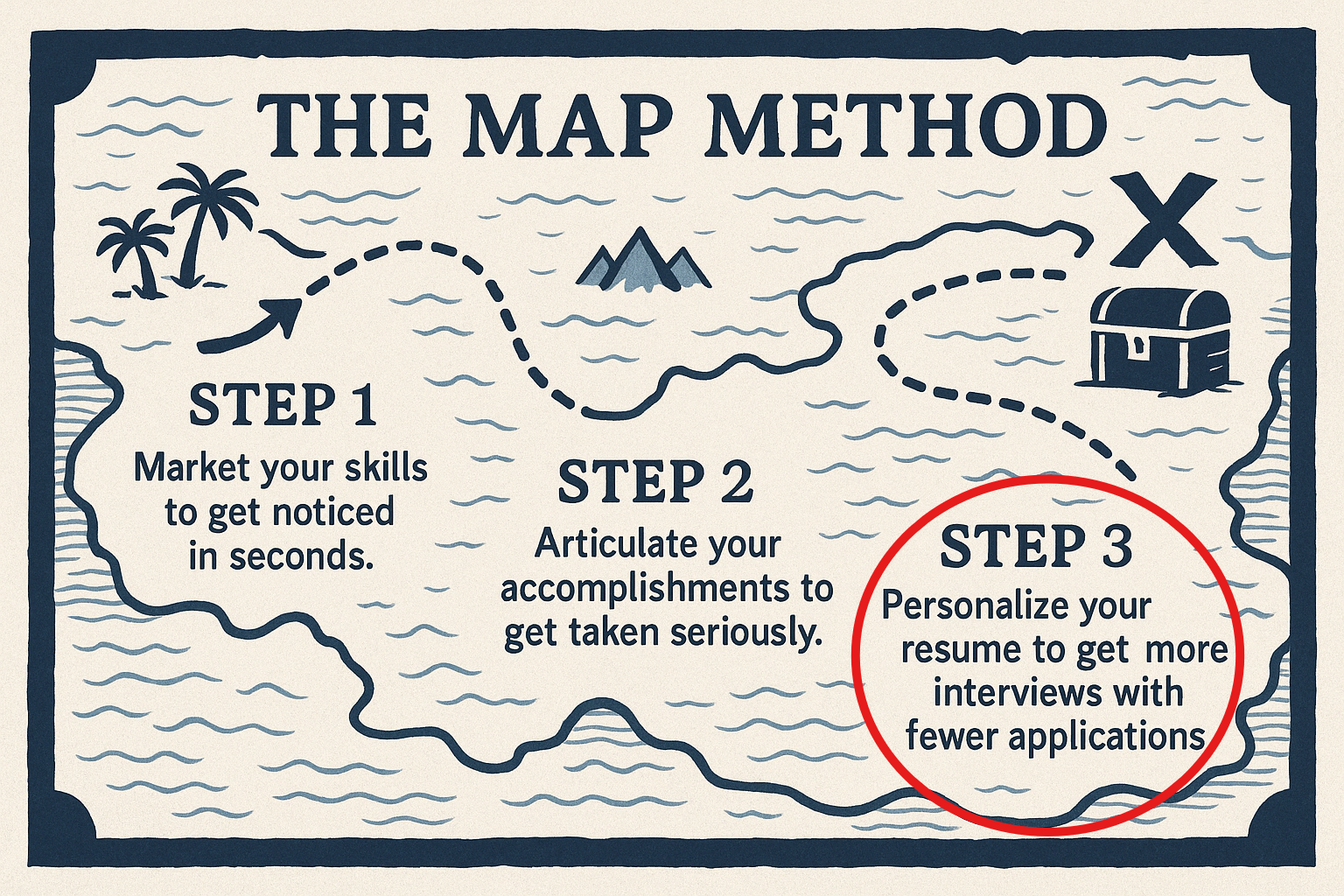
Sending out the same generic resume over and over? That’s a common mistake – and it’s hurting your chances.
Think of it like trying to hammer in a screw. Sure, you might get lucky sometimes, but it’s not the right tool for the job.
If a job wants someone skilled in R, SAP writing, and hypothesis testing, but your resume highlights Python, data science, and NLP, what message are you sending? That you really want the job?
Probably not.
Why Personalization Matters
Most biostatistics resumes list the same skills and experiences.
To stand out, your resume needs to show why you’re the perfect fit for this specific role.
Hiring managers want to see a candidate who aligns closely with the job’s requirements – not a generalist sending mass applications.
Quality Over Quantity
Applying to hundreds of jobs without customizing your resume is a waste of time.
Instead, focus on making each application count. Ask yourself: “How can I position myself as the best match for this role?” rather than, “How many jobs can I apply to?”
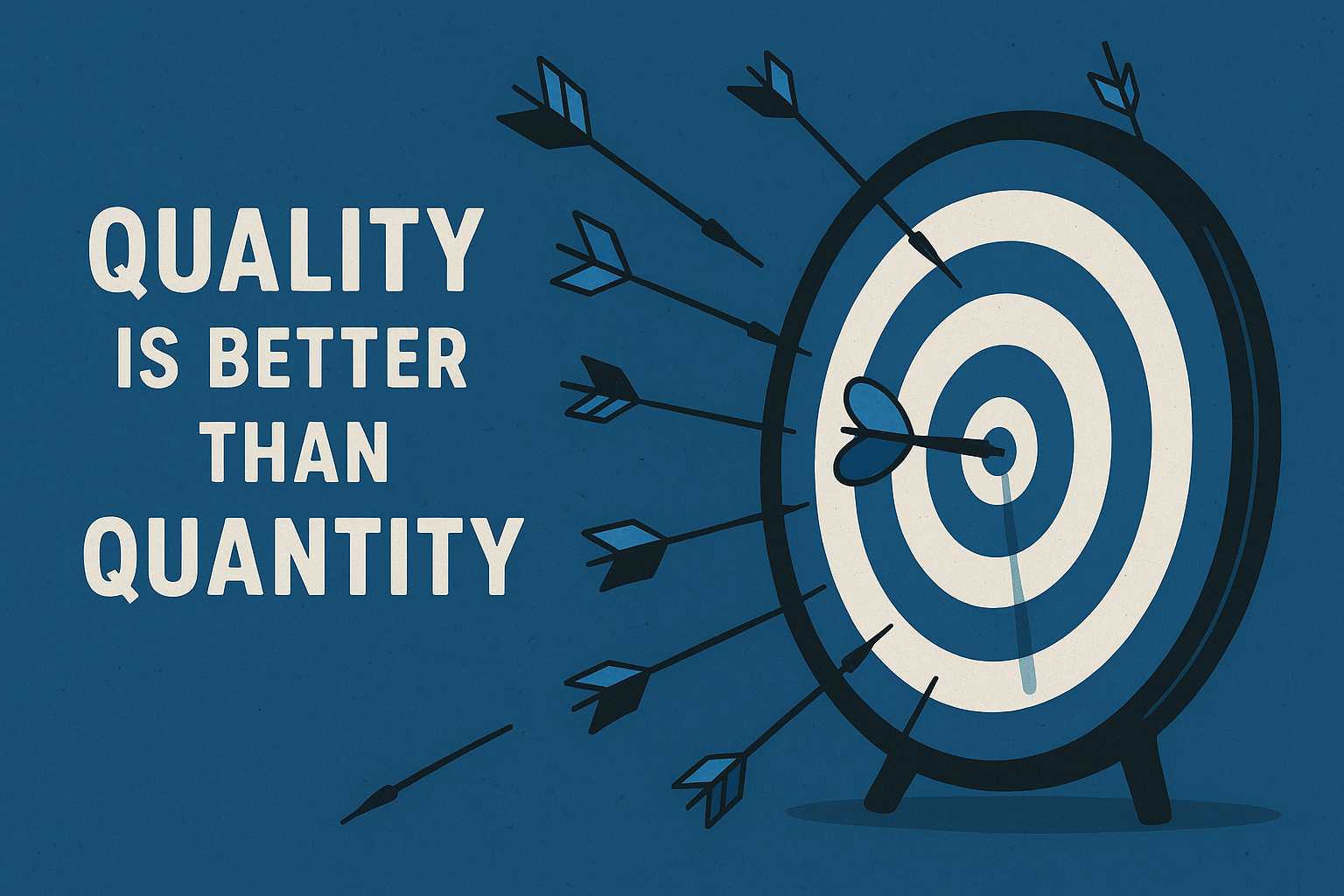
How To Personalize Your Resume
The first step to creating a standout resume is tailoring it to the specific job you’re applying for. This means analyzing the job description and making strategic updates to show you’re the perfect fit.
Before you touch your resume, study the job ad carefully. This is where you’ll find exactly what the employer wants. Look for:
-
Must-Have Skills & Keywords: Identify the skills and methods mentioned repeatedly. For example, if the job emphasizes mixed models, survival analysis, or SAS programming, these are must-haves to reflect on your resume.
-
Tools & Technologies: Take note of software, programming languages, and tools (e.g., R, Python, CDISC). If you have experience with these, highlight them upfront.
-
Preferred Experience or Methodologies: The job might list “preferred” skills or experiences that aren’t mandatory but would make you a stronger candidate. If you possess these, make them stand out.
This deep dive into the job ad forms the basis for the next steps. Once you’ve highlighted the key elements, it’s time to update the following resume sections:
-
Skills: Include the exact skills the job asks for – if you have them. Don’t list SAS if you only know R. Feel free to add relevant extras like data cleaning even if not mentioned.
-
Job Titles: Adjust your job titles slightly if needed. If your official title is “Research Scientist,” but you performed biostatistician duties, call yourself a biostatistician. This helps pass HR filters. Just be ready to back it up if contacted.
-
Work Experience: Highlight relevant experience with results-oriented statements. If the job wants mixed models and repeated measures, show you’ve done exactly that. Go beyond generic descriptions—quantify your impact.
-
Education: Include coursework that aligns with the role, especially if you lack direct experience.
-
Projects: Showcase relevant personal or academic projects, especially if you’re early in your career.
-
Publications: List only those publications relevant to the job.
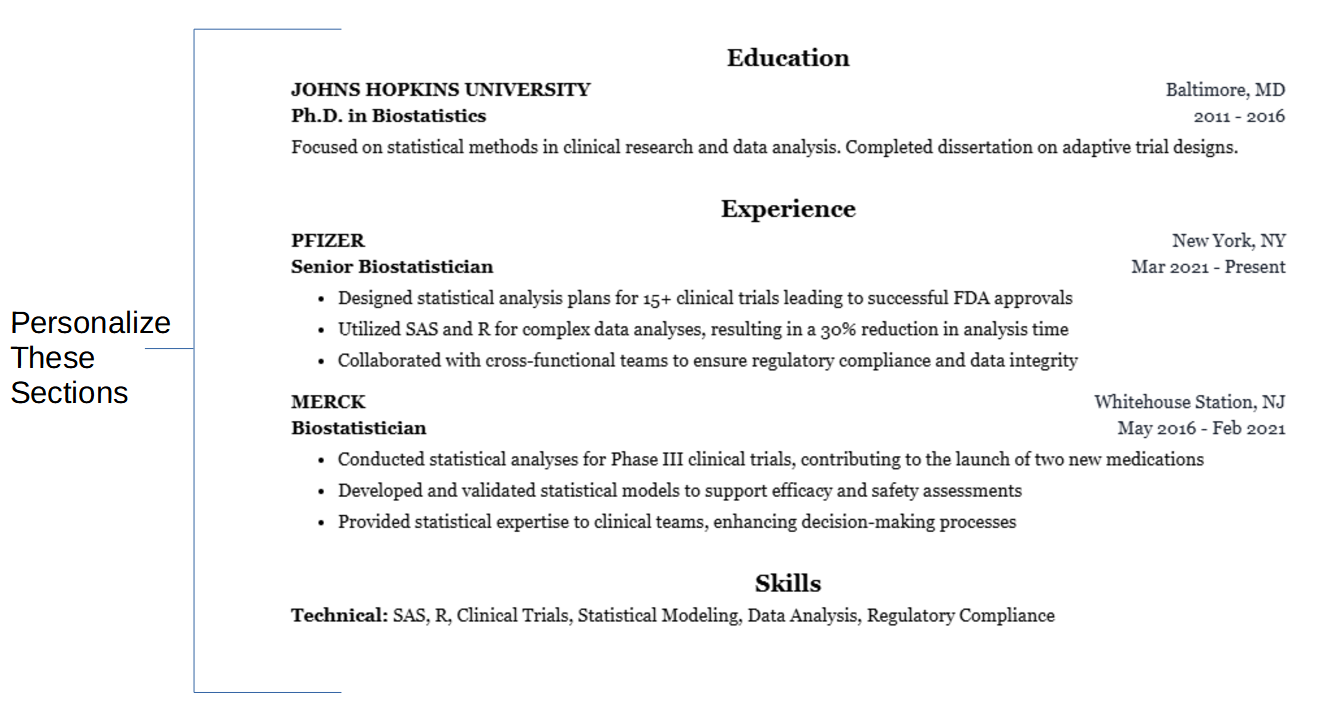
Note: Never lie in order to personalize your resume to the job you’re applying for! Always be honest, but be strategic. For example, if you don’t know SQL, take a short course so you can add “Basic SQL” to your resume.
How Long Does This Take?
At first, personalizing your resume might take 20-30 minutes per job. With practice, it’ll drop to 5-10 minutes. Over time, you’ll build tailored templates that make this fast and easy.
Bottom Line
Pick a job posting. Copy your resume. Spend five minutes customizing it. Compare the generic version with your tailored one. Which would you hire?
Personalization isn’t just a nice-to-have. It’s the key to fewer applications and more interviews.
Want to quickly personalize your resume? I put together a toolkit with a resume personalization checklist that I’m currently using to land interviews and job offers with The MAP Method. You can access it for free inside this MAP Method Resume Toolkit.
Now You Try It
Your resume isn’t just a list of tasks – it’s your marketing tool to get noticed in a crowded job market.
Applying to dozens of jobs with the same generic resume? That’s a waste of your time.
Sure it can work. But there’s a more effective solution: The MAP Method.
It’s how I landed a senior role with a $40,000+ raise in a competitive remote market.
With this approach, you can turn more applications into interviews (without blindly sending out generic resumes and hoping for a callback).
.
Update: The MAP Method Has Been Expanded
Get the full, advanced version of the MAP Method—inside a step-by-step course designed to help biostatistics professionals consistently land interviews (and offers) with a resume that does the hard work for you.

